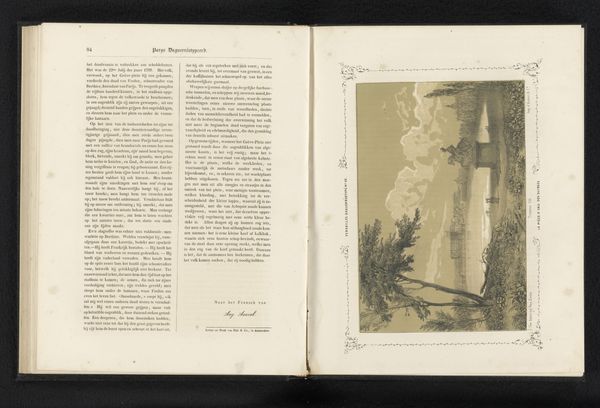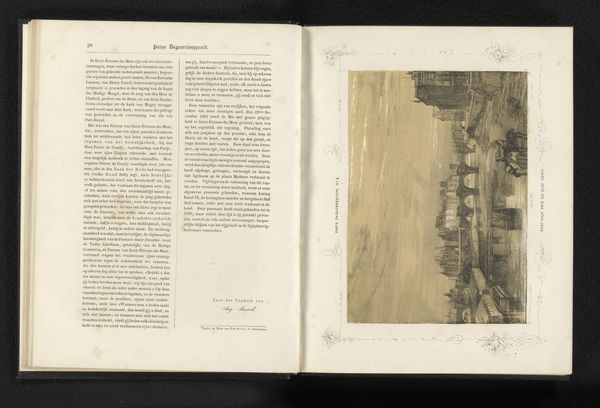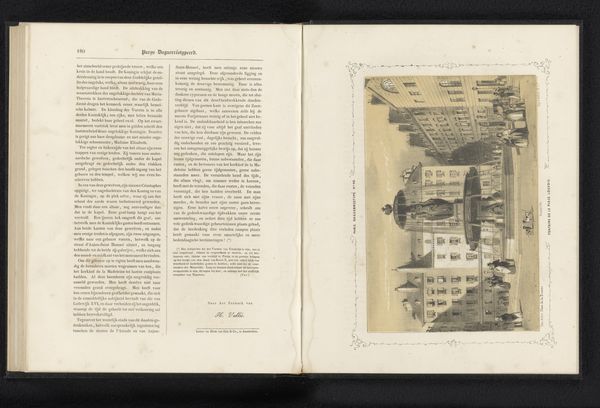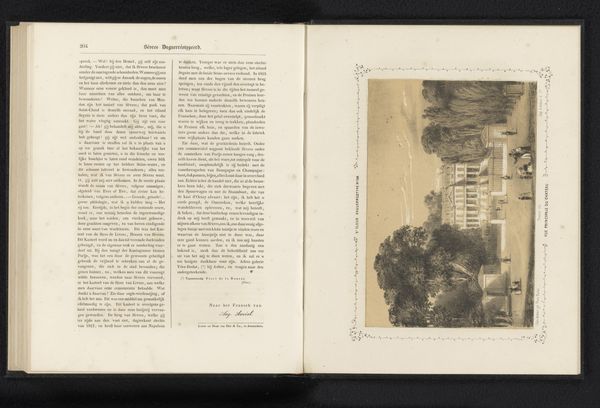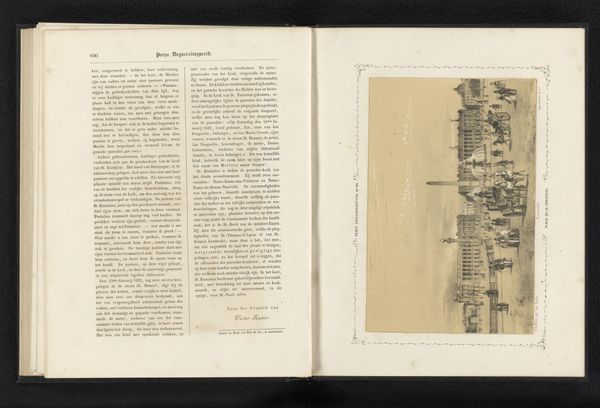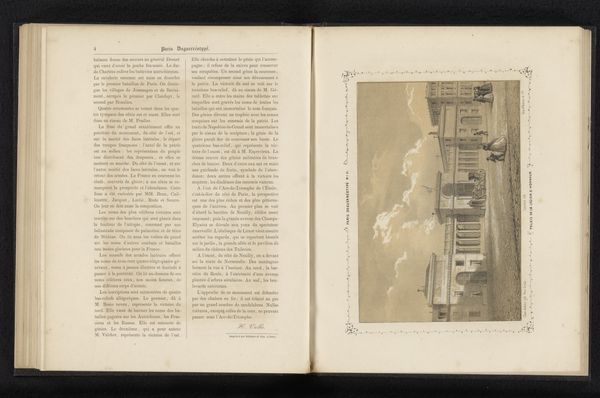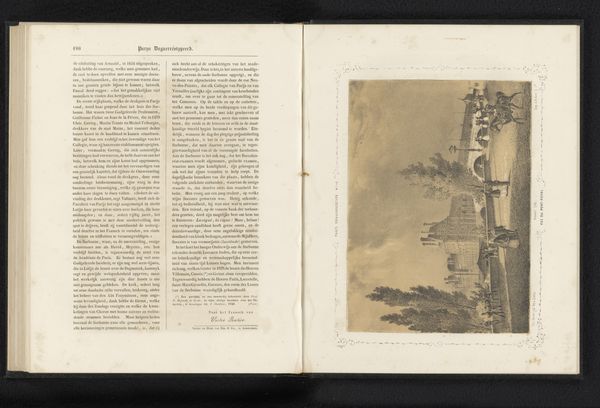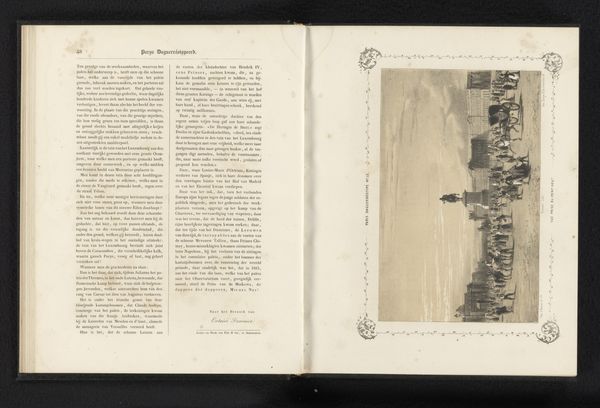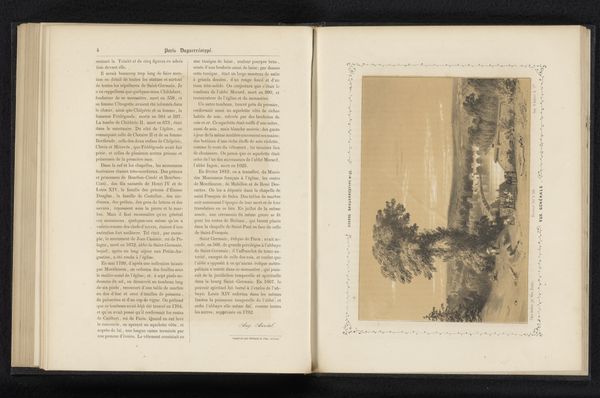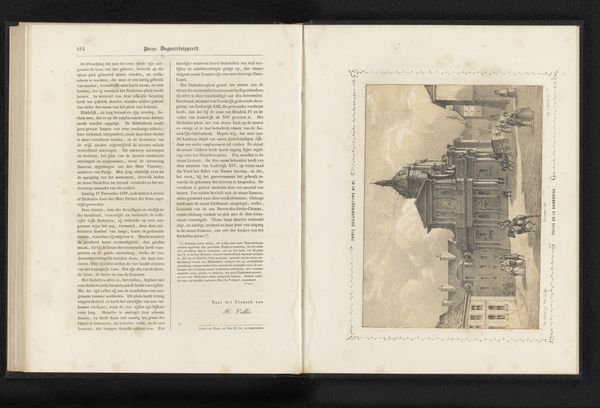
print, engraving, architecture
# print
#
landscape
#
romanticism
#
cityscape
#
engraving
#
architecture
Dimensions: height 210 mm, width 260 mm
Copyright: Rijks Museum: Open Domain
Curator: Here we have "Gezicht op het Tuilerieënpaleis," a cityscape dating from before 1840, made by A. Provost. It’s an engraving. What’s your immediate take? Editor: It evokes a sense of ordered leisure. The arrangement of figures and the formality of the architecture lend it a kind of delicate stateliness. How does the engraving process influence the overall impact, do you think? Curator: The print medium undoubtedly affected its accessibility. The choice to use engraving makes the image highly reproducible and contributes to the sense of its distributed knowledge. Editor: Right, the engraving speaks volumes about material concerns too—how many impressions were made, who consumed them, and within what price bracket? This work as object circulated within a system of production. Curator: Indeed. Considering its romantic style, observe how the perspective is rendered, the careful arrangement of space, and the architectural detail—hallmarks that situate it firmly within artistic movements focused on idealism and emotional expression. Editor: But how can we not see the laborers involved in producing the paper, preparing the copperplate, inking, and printing? That tactile, repetitive labor infuses the artwork even if unacknowledged. I’m also thinking of the consumers of such cityscapes; what did owning this printed palace represent to them in terms of aspirational lifestyles or class identity? Curator: These are all excellent points. When we view this, the visual balance creates a structured experience, while the engraving creates crisp, ordered forms that speak to the burgeoning Romantic aesthetic that shaped European art and thought at that moment. Editor: For me, thinking through material and circulation offers a critical viewpoint to consider not only aesthetic achievements, but social functions within systems of power. This changes how we encounter "Gezicht op het Tuilerieënpaleis". Curator: So even in its serene depiction, this piece captures something of both visual idealism and of the processes that give art its place in our world. Editor: Exactly, making this a richly layered encounter—both seen and unseen labor.
Comments
No comments
Be the first to comment and join the conversation on the ultimate creative platform.

